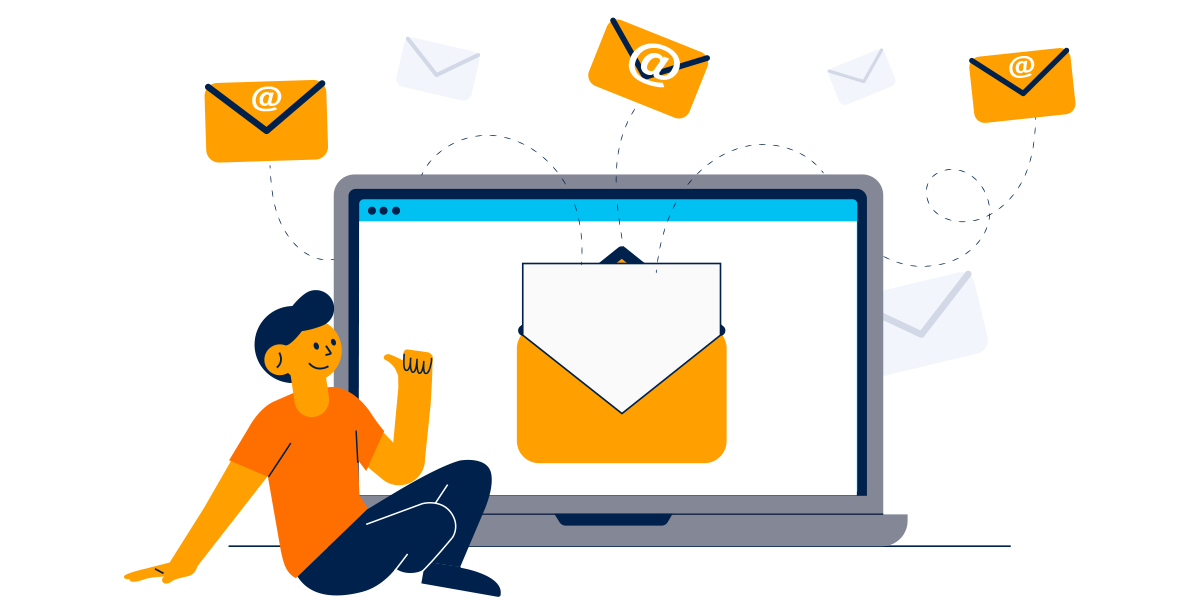Email marketing is essential for businesses of all sizes to communicate and engage with customers. But one-size-fits-all email campaigns are no longer effective. To truly connect with your audience, you need to personalize and optimize your emails. In this blog post, we’ll discuss the importance of email personalization and when, where, and how to implement it for the best results.
The importance of personalization
Personalization is not just a buzzword, it’s a game changer in the world of email marketing. People are inundated with emails every day, and to stand out from the clutter, your emails need to be relevant and tailored to each recipient. Here’s why personalization matters:
- Increase engagement: Personalized emails generate higher open and click-through rates. When recipients see content that speaks directly to their interests and needs, they are more likely to engage.
- Improve the customer experience: Personalization makes your customers feel valued. It shows that you understand their preferences and are willing to cater to their individual needs.
- Increase conversions: Relevant content and product recommendations increase conversions. Personalized emails can significantly increase your sales.
- Boost email deliverability: Email service providers favor senders who send relevant content. Personalization can improve your sender reputation, ensuring that your emails are delivered to inboxes and not spam folders.
When to use email personalization
Strategically integrating email personalization can have a significant impact. Segment your email list based on demographics, preferences, or behavior to create tailored content and offers for each group. Here are some key points to consider when incorporating personalization into your email marketing strategy:
- Welcome emails: Make a great first impression by sending personalized welcome emails to new subscribers or customers. This sets the tone for future interactions.
- Behavioral triggers: Send personalized emails based on customer actions, such as abandoned shopping carts, site visits or previous purchases. These trigger-based emails are highly effective. For example, with abandoned carts, you can send personalized reminders to customers who have left items in their shopping carts. Include images and descriptions of the items to encourage them to complete their purchase, and sweeten the deal with a limited-time offer.
- Promotions/event invitations: Segment your audience based on demographics, purchase history, and engagement level instead of sending the same promotion to everyone. Tailor event invitations, such as pop-up store openings, based on the recipient’s location and interests.
- Birthday/anniversary promotions: Celebrate your customers by sending personalized offers on their birthdays, half birthdays, or first purchase anniversaries. Include exclusive discounts or rewards to make them feel truly appreciated.
- Transactional emails: Personalize order confirmations and shipping notifications to reassure customers that their purchase is being handled with care. You can even include contact information for a personal point of contact should they need assistance.
- Post-purchase follow-up: After a successful purchase, send a personalized “thank you” email with recommendations for related products. Consider including a special offer as a gesture of gratitude.
Where to implement email personalization
Email personalization can be implemented in several areas of your email marketing strategy:
- Subject lines: Personalize subject lines with the recipient’s name or a reference to their previous interactions with your brand. A personalized subject line can increase open rates.
- Content: Tailor email content to the recipient’s interests, purchase history or browsing behavior. Use dynamic content blocks.
- Product Recommendations: Incorporate personalized product recommendations based on the recipient’s browsing or purchase history. This can significantly increase sales.
- Call to Action (CTA): Customize your CTA buttons based on the recipient’s journey. For example, if they have abandoned a shopping cart, the CTA can encourage them to complete the purchase.
What to consider with email personalization
To fully leverage the power of personalized email journeys, you need the right tools and strategies:
- Data Collection: Collect and analyze customer data, including purchase history, browsing behavior, and demographic information. Use customer relationship management (CRM) software to centralize this data.
- Automation: Use marketing automation platforms like trbo to create personalized email workflows triggered by specific events or actions. It’s easy – and you’ll have a dedicated client success manager if you need help.
- Compliance: Striking a balance between personalization and privacy ensures that your customers feel valued without feeling that their privacy is being compromised. Ensure that your email personalization efforts comply with privacy regulations such as GDPR or CCPA. Ask for consent where appropriate, and be transparent about data usage.
- Monitor and analyze: Track the performance of your personalized email campaigns. Monitor key metrics such as open rates, click-through rates, and conversion rates to evaluate the effectiveness of your personalized email campaigns.
- A/B testing: Personalization isn’t a one-size-fits-all solution; it requires constant refinement! Continuously test and optimize your personalized email campaigns to determine what works best with your audience. A/B test different subject lines, email layouts, and calls to action to see what resonates with your customers. You can continually tweak and refine your approach based on the insights you gain.
Email personalization and optimization are critical to the success of modern email marketing. By implementing personalization at the right time, in the right place, and with the right strategies, you can create personalized email journeys that engage your audience, drive conversions, and build lasting customer relationships.
